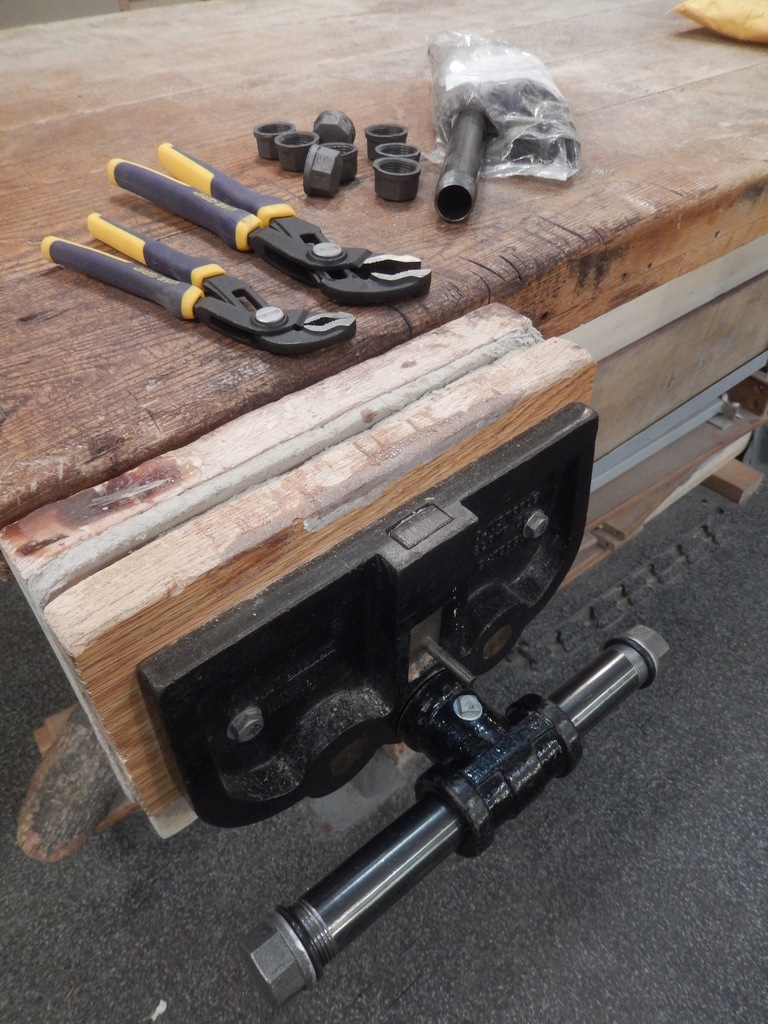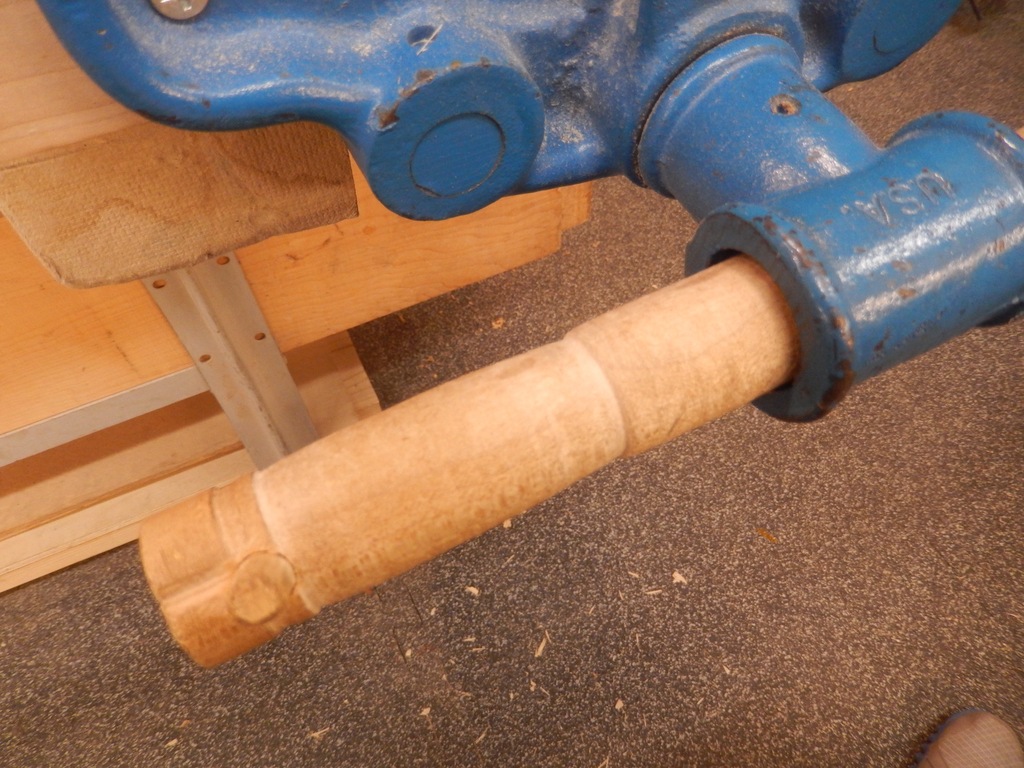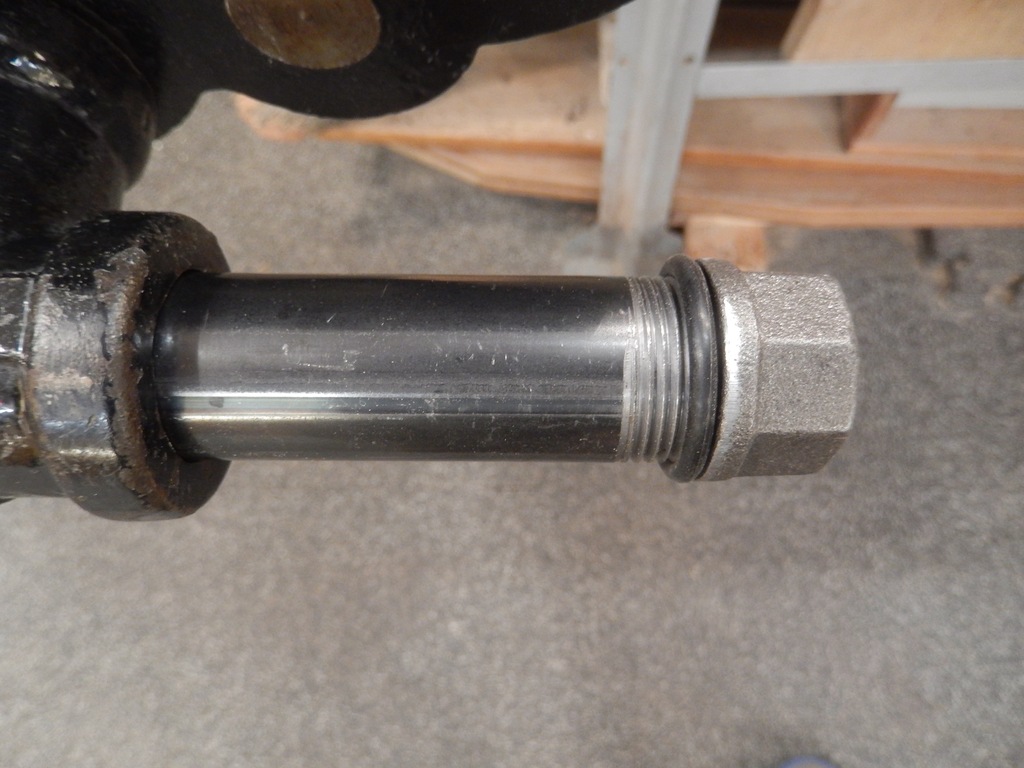We may receive a commission when you use our affiliate links. However, this does not impact our recommendations.

We may receive a commission when you use our affiliate links. However, this does not impact our recommendations.
My school’s woodshop is equipped with 14 professional woodworking vises that are being used all the time by students of different age groups. Many of our vises were made by Pony – Jorgensen, and Milwaukee tools. Each vise came originally with a wooden handle that was installed through its cast iron T- handle fitting. If you own such a vise and use it intensively you will notice that as time goes by the wooden handle will endure substantial compression from the round opening of the cast iron T-handle. Over time, and especially if a student attempted to close it with excessive force, the handle can break off. Obviously, we can try to turn a new handle or buy a dowel and install it with caps that we turn or make, but there is an easier solution.

This is one of the two well made Milwaukee tools vises that we bought in recent years. The Milwaukee 10″ and 7″ vises are the last remaining USA made vises in production.
I recently ordered four “3/4” wide x 10” Malleable Long Cast Iron Pipes” (I believe that the pipes are actually made of steel) a bag of ten 3/4 inch Malleable Cast Iron Pipe Cap, and a package of 1” (interior diameter) O-rings. After cleaning the pipes and the caps from the factory’s protective oil I installed two of them to replace the two wooden handles that broke recently. The pipe and caps packet with the two dampening O-ring are much stronger than the wooden handle and will last much longer.

Although longer pipes that match the original length of the wooden handle (12”) are available on sites such as Amazon and in your local hardware store, I decided to order the shorter 10” handle. My reason for this was, a shorter handle will limit the torque that the vise screw will have to withstand. Over the years I have noticed that some students, out of playfulness or just because they want to show off their strength, try to over tighten the vise, which is detrimental for the vise and its mechanism. So in order to limit the potential harm to the vise it would be beneficial to reduce the handle’s moment by reducing its length.

The cast iron caps came with rough edges at their base, but with a file and some sand paper I was quickly able to refine them.
 I admit that a steel pipe looks bad compared to a wooden handle, it feels cold to the touch and “cold at heart” but If you want a quick and strong replacement, long-lasting and inexpensive for a worn or broken handle, then this is the way to go.
I admit that a steel pipe looks bad compared to a wooden handle, it feels cold to the touch and “cold at heart” but If you want a quick and strong replacement, long-lasting and inexpensive for a worn or broken handle, then this is the way to go.
Here are some supplies and tools we find essential in our everyday work around the shop. We may receive a commission from sales referred by our links; however, we have carefully selected these products for their usefulness and quality.









In addition to the error that jayedwin98020 pointed out, I found a couple of others that spellcheck or autofill screwed up. The torque should probably exceed rather than accede and the wooden handle probably broke due to wear…
I think you have found a good solution to the problem of student exuberance in tightening vises.
Thanks so much for pointing out the errors.
YL
Yoav Liberman: FYI: The expression you used: “worth comes to worth”,
is it not actually “worse comes to worse”?
Or, have I been incorrect all these years? ; )
Many thanks Jay! I just corrected my mistake.
The wood handle served a bit like a shear pin by being the weakest link in the mechanism. Do you have any concern that now with the handle being so much stronger that now some other, more expensive part will become the sacrificial part?
Hi there,
The vises that we have been using (as mentioned in my story most of them were made by Jorgensen) have a protective failed mechanism in the shape of the rivet that connects the Acme screw’s “T” handle holder to the screw. This rivet or pin had sheared on us at least in two cases as a result of harmful torque that was applied by our students. If you look closely at the lead and last picture of the article you can see that the “T” is connected to the screw with a square head bolt. I installed that bolt (made from mild steel so it can be sheared if worse comes to worse) after the original rivet was sheared. Another integral protective mechanism in the Jorgensen vises is the bronze insert – inside the quick release nut. I wrote about it recently and said that it is probably intended to be stripped by the steel Acme screw if the torque exeed the set allowances. In addition, a few vises such as Yost and Wilton make use of a steel rod or pipe as a handle, so I think that with all reasonable assessment, replacing a wooden handle that broke due to wear, with one made of steel should not be detrimental to the vise’s structural integrity.
YL